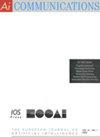Multi-feature fusion dehazing based on CycleGAN
IF 1.4
4区 计算机科学
Q4 COMPUTER SCIENCE, ARTIFICIAL INTELLIGENCE
引用次数: 0
Abstract
Under the foggy environment, lane line images are obscured by haze, which leads to lower detection accuracy, higher false detection of lane lines. To address the above problems, a multi-layer feature fusion dehazing network based on CycleGAN architecture is proposed. Firstly, the foggy image is enhanced to remove the fog in the image, and then the lane line detection network is used for detection. For the dehazing network, a multi-layer feature fusion module is used in the generator to fuse the features of different coding layers of U-Net to enhance the network’s recovery of information such as details and edges, and a frequency domain channel attention mechanism is added at the key nodes of the network to enhance the network’s attention to different fog concentrations. At the same time, to improve the discriminant effect of the discriminator, the discriminator is extended to a global and local discriminator. The experimental results show that the dehaze effect on Reside and other test data sets is better than the comparison method. The peak signal-to-noise ratio is improved by 2.26 dB compared to the highest GCA-Net algorithm. According to the lane detection of fog images, it is found that the proposed network improves the accuracy of lane detection on foggy days.基于 CycleGAN 的多特征融合去毛刺技术
在多雾环境下,车道线图像会被雾霾遮挡,导致检测精度降低,车道线误检率升高。针对上述问题,提出了一种基于 CycleGAN 架构的多层特征融合去毛刺网络。首先,对雾气图像进行增强以去除图像中的雾气,然后使用车道线检测网络进行检测。对于去雾网络,在生成器中使用了多层特征融合模块,将 U-Net 不同编码层的特征进行融合,以增强网络对细节和边缘等信息的恢复能力,并在网络的关键节点加入了频域信道关注机制,以增强网络对不同雾气浓度的关注。同时,为了提高判别器的判别效果,将判别器扩展为全局判别器和局部判别器。实验结果表明,在 Reside 和其他测试数据集上的去雾效果优于对比方法。与最高的 GCA-Net 算法相比,峰值信噪比提高了 2.26 dB。根据雾图像的车道检测,发现所提出的网络提高了雾天车道检测的准确性。
本文章由计算机程序翻译,如有差异,请以英文原文为准。
求助全文
约1分钟内获得全文
求助全文
来源期刊

AI Communications
工程技术-计算机:人工智能
CiteScore
2.30
自引率
12.50%
发文量
34
审稿时长
4.5 months
期刊介绍:
AI Communications is a journal on artificial intelligence (AI) which has a close relationship to EurAI (European Association for Artificial Intelligence, formerly ECCAI). It covers the whole AI community: Scientific institutions as well as commercial and industrial companies.
AI Communications aims to enhance contacts and information exchange between AI researchers and developers, and to provide supranational information to those concerned with AI and advanced information processing. AI Communications publishes refereed articles concerning scientific and technical AI procedures, provided they are of sufficient interest to a large readership of both scientific and practical background. In addition it contains high-level background material, both at the technical level as well as the level of opinions, policies and news.
 求助内容:
求助内容: 应助结果提醒方式:
应助结果提醒方式:


